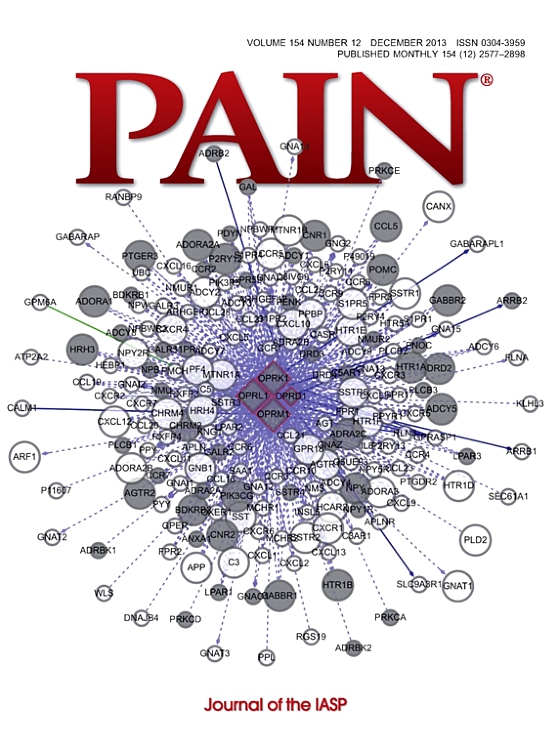Familial risk of carpal tunnel syndrome among first-degree relatives and interaction with obesity and hyperglycemia-a population-based study in Korea.
IF 5.5
1区 医学
Q1 ANESTHESIOLOGY
引用次数: 0
Abstract
Although genetic and lifestyle factors are known to be involved in carpal tunnel syndrome development, population-level familial risk and interactions between gene and environmental factors have been scarcely studied. We investigated population-based familial risk and assessed the interactions between family history and obesity or hyperglycemia. By using the National Health Insurance database, which covers the total population in Korea, we constructed a cohort of 5,524,403 individuals with information on familial relationships and lifestyle factors from 2002 to 2019. Familial risk was calculated using hazard ratios (HRs) that compare the risk of individuals with and without affected first-degree relatives (FDRs). Interactions between familial risk and obesity/hyperglycemia were assessed on an additive scale using the relative excess risk due to interaction (RERI). Individuals with affected FDRs showed a 1.99-fold increased risk of disease, with twin, brother, sister, paternal, and maternal risks (95% confidence interval) of 17.53 (9.43-32.58), 2.57 (2.20-3.00), 2.38 (2.04-2.77), 1.72 (1.60-1.86), and 1.95 (1.88-2.03), respectively. In the interaction analysis, the combined risk of positive family history and high body mass index or hyperglycemia exceeded the sum of their individual risks (HR 3.33 vs 2.55, 2.51 vs 2.28, respectively), showing statistically significant interactions (RERI 0.78, 0.23, respectively). Obese individuals with a family history (RERI 1.12) showed a more prominent interaction than overweight individuals (RERI 0.26), and similarly, excess risk was higher in severe hyperglycemic (RERI 0.82) compared with moderate hyperglycemic individuals (RERI 0.28), suggesting a dose-response interaction pattern. Our interaction findings indicate that individuals with a family history and obesity/hyperglycemia should be considered a high-risk population.一级亲属腕管综合征的家族性风险及其与肥胖和高血糖的相互作用——韩国一项基于人群的研究
虽然已知遗传和生活方式因素与腕管综合征的发展有关,但人群水平的家族风险以及基因和环境因素之间的相互作用几乎没有研究。我们调查了基于人群的家族风险,并评估了家族史与肥胖或高血糖之间的相互作用。通过使用覆盖韩国总人口的国民健康保险数据库,我们构建了一个包含5,524,403人的队列,其中包含2002年至2019年期间家庭关系和生活方式因素的信息。使用危险比(hr)来计算家族性风险,该风险比比较有和没有受影响的一级亲属(FDRs)的个体的风险。家族性风险与肥胖/高血糖之间的相互作用采用相互作用的相对过量风险(rei)的加性量表进行评估。患病个体的患病风险增加1.99倍,双胞胎、兄弟、姐妹、父亲和母亲的患病风险(95%置信区间)分别为17.53(9.43-32.58)、2.57(2.20-3.00)、2.38(2.04-2.77)、1.72(1.60-1.86)和1.95(1.88-2.03)。在相互作用分析中,阳性家族史与高体质指数或高血糖的联合风险超过了个体风险的总和(HR分别为3.33 vs 2.55, 2.51 vs 2.28),具有统计学意义的相互作用(rei分别为0.78,0.23)。有家族史的肥胖个体(RERI为1.12)比超重个体(RERI为0.26)表现出更显著的相互作用,同样,重度高血糖患者(RERI为0.82)的过度风险高于中度高血糖患者(RERI为0.28),提示存在剂量-反应相互作用模式。我们的相互作用结果表明,有家族史和肥胖/高血糖的个体应被视为高危人群。
本文章由计算机程序翻译,如有差异,请以英文原文为准。
求助全文
约1分钟内获得全文
求助全文
来源期刊

PAIN®
医学-临床神经学
CiteScore
12.50
自引率
8.10%
发文量
242
审稿时长
9 months
期刊介绍:
PAIN® is the official publication of the International Association for the Study of Pain and publishes original research on the nature,mechanisms and treatment of pain.PAIN® provides a forum for the dissemination of research in the basic and clinical sciences of multidisciplinary interest.
 求助内容:
求助内容: 应助结果提醒方式:
应助结果提醒方式:


